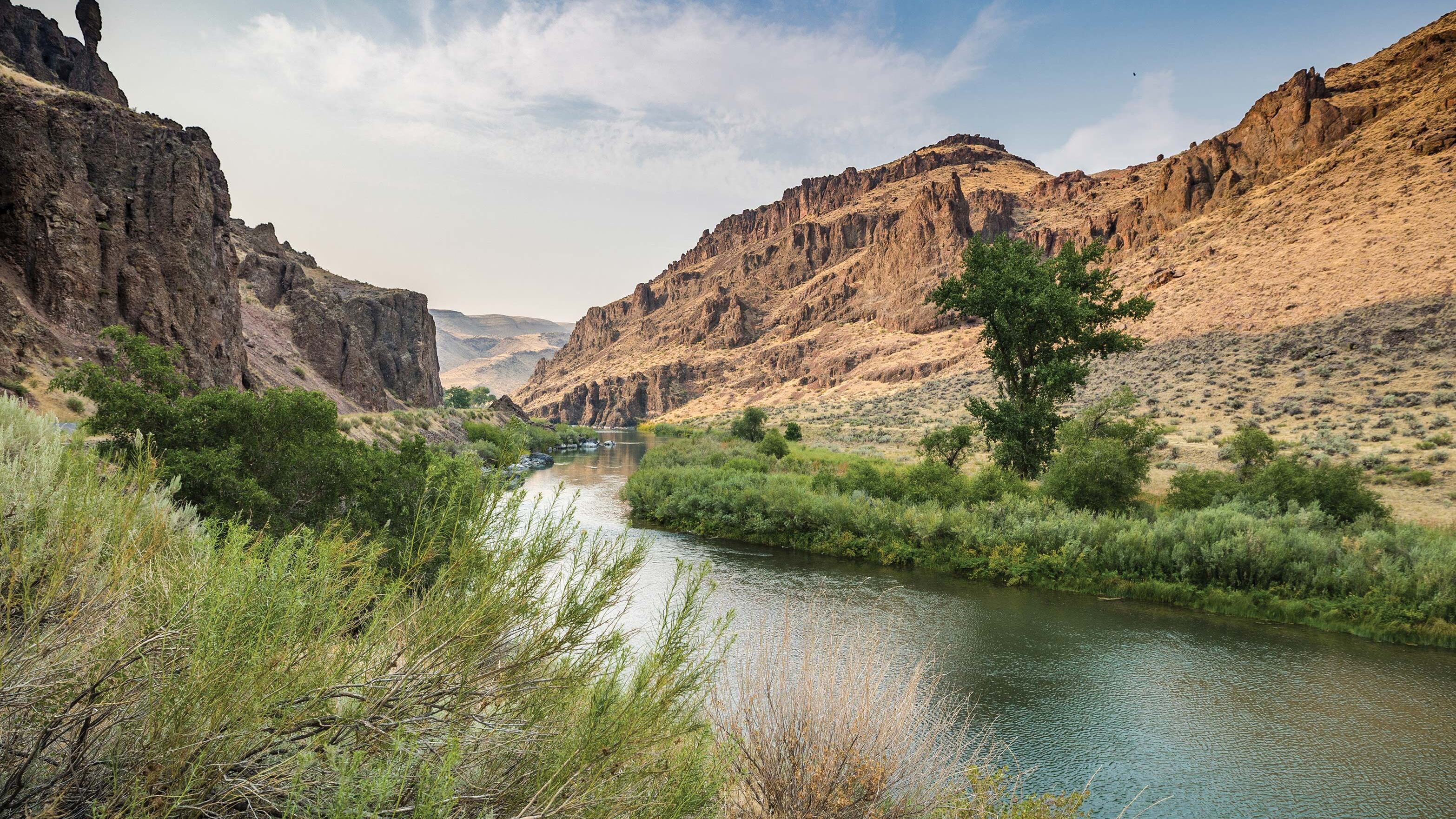It's a chilly afternoon in late April and I'm standing in the driveway next to my cabin, gazing down at a deflated kayak, then up to assess the graying sky. What was, hours earlier, an expanse of radiant indigo, with only a smattering of cotton ball-like clouds, has given way to a more ominous blanket of slate spitting cold droplets of rain that feel like pinpricks. A rare storm is sweeping across the arid landscape of knife-edged mountains, plunging ravines and sprawling plateaus. And it's only getting worse.
I have only one night to stay at Lake Owyhee State Park, more than 400 miles from Portland in Malheur County, and I didn't drive seven hours to miss the chance to get out on the water. There is no other option. It's time to get soaked.
Lake Owyhee is about as far away as you can get from our urban core while still remaining in the state. That means few Portlanders have been to the reservoir, which winds a 53-mile path through the southeastern outback. This rugged destination is so far-flung, it's in the slice of Mountain Time Zone that bleeds across the border from Idaho into Oregon.
Even the state park website warns would-be campers about its location: "This is a remote recreational experience. Please prepare accordingly."
So why travel to what feels like the end of the earth when you could pitch a tent on patches of perfectly suitable land much closer to the city? Because Lake Owyhee is unlike anything you've ever seen in Oregon. Imagine a giant uprooting Zion National Park and plopping it down here before turning on a massive hose to fill the gorge with water, as though it were the world's largest kiddie pool. That's one way to summarize the beauty of this place, which has also earned the nickname "Oregon's Grand Canyon."
Getting to the park and its upper and lower campgrounds, with a combined 51 sites for RVs, nine for tents and two cabins, is a trip through a dramatically changing landscape. Nyssa, the last town on Highway 26 before it crosses the Snake River into Idaho, about 30 miles to the north, wouldn't be out of place in a flatter state like Missouri or Kansas. The level ground has made it an ideal place to grow onions—farms surround the community as far as you can see, and the roads are lined with the bulbs' flaky yellow and purple skins that fly off during transit. But it doesn't take long before you start to see ragged rock walls rising toward the sky. Since it's spring during my visit, many of the umber-colored formations are carpeted in green vegetation—this peach fuzz will shrivel under the baking sun come summer.
As the road narrows, the Owyhee River twists into view and then follows the route the rest of the way to Owyhee Dam, which created the lake. Before you get to that landmark, pull into the small lot to the left of a sign for Snively Hot Springs. You can easily spot the source of the steaming bath, but don't dip into the concrete-ringed well. Head for the bank, where the water mixes with the river's cooling currents. Two women in trucker hats, guzzling beer from cans in koozies and sitting in the rock-lined pool, tell me it's the perfect temperature at that spot.
From there, the bluffs grow taller and the path tapers to one lane through a tunnel blasted out of the side of a hill. As you approach the dam, it widens again and there's enough room to park on the shoulder and take a peek at the curved wall holding back a tsunami. When completed in 1932, the dam was the tallest in the country at 417 feet above the riverbed, but it wouldn't hold the record for long. In a way, the structure was an experiment. Engineers used the project to test theories developed to construct Nevada's Hoover Dam, whose unprecedented size—eventually towering more than 300 feet higher than the Owyhee—required new methodology.
While you can find most of the facts about the dam on government websites, those sources don't tell you about the ghost town of Watson. That's a tidbit you'll only hear about from locals. Unlike most abandoned villages, where you can stumble across the rusting remnants or skeletons of buildings, Watson takes more effort to find, because it's under gallons and gallons of water. The creation of the lake flooded it all, and while there are rumors that scuba divers sometimes scour the bottom for signs of civilization, dry years will naturally reveal traces of the ranches that used to stand there.
If searching for waterlogged history isn't enough to get you off the boat launch, then consider that the park is filled with geologic wonders you can see only from the lake. It's why I decide to pump up the crumpled kayak purchased specifically for this adventure and shove off in a downpour—though onsite rentals are available May through September from Ontario Board Shack (541-212-6096, ontarioboardshack.com). The wind has picked up, driving the showers straight into my face. When I'm not blinded by precipitation, the mascara I now regret applying that morning runs down my face, stinging my eyes. But once it has washed away, the breeze dies down, and I can actually see, the view is unbelievably rewarding. Emerald pinnacles protrude like church spires, and low-slung clouds make it feel as if I have actually somehow paddled to the craggy shores of Scotland. Even though I'm drenched and cold, I wouldn't trade this vantage for the warmth and comfort of my cabin. To fully appreciate Owyhee, you must be bobbing about the canyon. Few things are worth spending seven hours in a car for. This is one of them.

